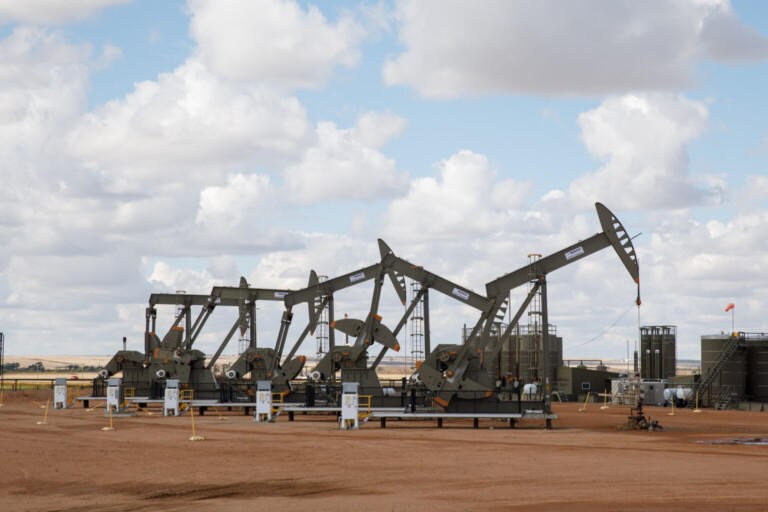Study pegs potential $9 billion tax impact for CO2 in North Dakota oil wells

BISMARCK, N.D. (North Dakota Monitor) — North Dakota could see another $9 billion in oil tax revenue over 10 years if oil companies begin injecting carbon dioxide into oil wells on a large scale, an analysis released Tuesday shows.
North Dakota Tax Commissioner Brian Kroshus on Tuesday outlined the potential of carbon dioxide on oil production and tax revenue for the state Industrial Commission.
Injecting a gas such as carbon dioxide into an oil well — a process called enhanced oil recovery — can increase the amount of oil the well will produce.
The technique has not yet been widely adopted in North Dakota, the nation’s No. 3 oil-producing state. One factor holding back enhanced oil recovery is federal tax incentives are higher for permanent underground storage for carbon dioxide than they are for enhanced oil recovery.
A news release from the three-member Industrial Commission, chaired by Gov. Kelly Armstrong, called on the federal government to enact tax parity for CO2 projects.

North Dakota Tax Commissioner Brian Kroshus on Jan. 28, 2025, discusses a report on the potential impact of enhanced oil recovery on tax revenue. (Jeff Beach/North Dakota Monitor)
“Closing that incentive gap is incredibly important,” Kroshus said.
North Dakota has potentially large-scale sources of CO2 from coal-fired power plants, ethanol plants and other industries.
The $9 billion tax impact was at the high end of the revenue potential, Kroshus said, with the low-end impact at $2.9 billion. That tax impact is just based on oil production and doesn’t figure in increased tax collection from sources such as corporate or individual income taxes.
Kroshus’s report on the tax potential is based on information from the Energy and Environmental Research Center in Grand Forks on how enhanced oil recovery could impact the state’s oil production. The EERC estimates that injecting CO2 could add 5 billion to 8 billion barrels of oil from the Bakken Formation over the next 30 to 50 years.
Kroshus said gas injection would require major investments by the oil and gas industry.
“It’s really about infrastructure buildout,” Kroshus said. His 10-year tax impact study starts in 2028 because he said it will take at least three years to build the infrastructure needed for enhanced oil recovery.
Armstrong, whose background is in the oil and gas industry, said enhanced oil recovery has the potential to “build a future for kids that haven’t even been born yet.”
Kroshus said enhanced oil recovery has the potential to even out some of the highs and lows of the oil industry, which has seen boom-and-bust cycles and some dips.
Kroshus said another positive effect of enhanced oil recovery is that it makes better use of existing oil wells without additional disturbance to the surface.
He said North Dakota needs to push to be an early adopter of enhanced oil recovery. “We’re not the only state that is eager to get their hands on this CO2,” he said.
North Dakota’s oil industry experienced a resurgence with the advent of horizontal drilling and hydraulic fracturing.
Enhanced oil recovery differs from hydraulic fracturing, though both make wells more productive. Hydraulic fracturing creates fissures or cracks in the shale rock, making it easier to squeeze out the oil. Enhanced oil recovery uses gas to create pressure in the well, forcing more oil to the wellbore.
North Dakota’s oil industry in 2024 marked 5 billion barrels of oil production from the Bakken Formation.
Kroshus said the state has collected $23 billion in oil tax revenue over the last decade.
(Story written by Jeff Beach – North Dakota Monitor)






